So, to save you the headache, I’ve done a deep dive on price elasticity. In this piece, I’ll tackle the big questions, including: How do you calculate price elasticity? What are the different types, and what do they mean for your business? Let’s dive in.
Table of Contents
- Price Elasticity of Supply Formula
- What is price elasticity?
- How to Calculate Price Elasticity
- Price Elasticity of Demand
- Price Elasticity of Supply
- Cross Price Elasticity
- Practical Economics: The Case Understanding Price Elasticity
What is price elasticity?
Price elasticity measures how sensitive the demand and supply of your product are to changes in price. For example, the price elasticity of demand measures how many customers will continue to purchase your product or service if you increase the price.
Price elasticity can fall into one of three buckets:
- Price elastic — where price changes greatly affect the supply or demand of a product or service.
- Price inelastic — where price changes have a minimal effect on supply and demand
- Price unit elastic — where a price change is proportional to the change in supply and demand, and they move at the same rate
How to Calculate Price Elasticity
To calculate price elasticity, I divide the change in demand (or supply) for a product, service, resource, or commodity by its change in price. This figure tells me which bucket my product falls into.
- A value of one means that my product is unit elastic, and price changes reflect an equal change in supply or demand.
- A value of greater than (>) 1 means that my product is elastic, and price changes will cause a greater-than-proportional change in supply or demand.
- A value of less than (<) 1 means that your product is inelastic, and price changes will result in a smaller change in the supply or demand for your product.
Worth noting? Using this formula may produce a negative number. However, that doesn't matter when it comes to price elasticity of supply or demand. Instead, answers are reported as their absolute value, which just means you’re removing the negative sign.
For example, let’s say I do my calculations and get a value of -1.5 for my price elasticity of demand. In typical mathematics, this number is less than one. When calculating price elasticity of supply and demand, however, we drop the negative sign and get 1.5, which means the demand for the product is elastic.
Here’s a chart that shows all three buckets:
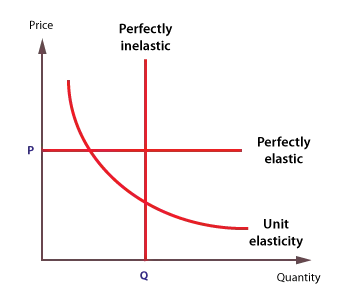
How can you apply price elasticity?
Price elasticity provides useful information on how to best price your products and services.
- If you have an elastic product:
Be cautious about raising prices since a price increase will greatly impact purchases (demand) and production (supply).
- If your offering is price inelastic:
You can adjust your prices more frequently since you know that the change will have a smaller impact on supply and demand.
Now that we’ve covered how price elasticity impacts your business, let’s break things down even further into price elasticity of demand and price elasticity of supply.
Price Elasticity of Demand
The formula below (also known as PED) is used to identify how a change in price affects the supply or demand of an offering or commodity. If people still buy a product, service, or resource when the price is raised, it is inelastic. A product is elastic when demand changes due to price fluctuations.
For example, research shows that rising fuel prices don’t change demand in the trucking industry — making fuel an inelastic commodity. Cable television, however, is a very elastic product. As the price of cable has increased, demand has decreased as more consumers “cut the cord.”
Substitutions like Netflix, Hulu, and other streaming services have made the cable industry elastic.
Price Elasticity of Demand Formula
% Change in Quantity / % Change in Price = Price Elasticity of Demand
Let’s say I sell 5,000 electric toothbrushes at $25 per toothbrush and then raise the price to $30 per brush and sell 4,000. This means my elasticity of demand is -1.22. This would be considered elastic because the absolute value of -1.22 is greater than 1.
Broken down even further to include the calculation of percent change, this formula looks like:
((QN - QI) / (QN + QI) / 2) / ((PN - PI) / (PN + PI) / 2)
- QN = New quantity (4,000)
- QI = Initial quantity (5,000)
- PN = New price ($30)
- PI = Initial price ($25)
Our numbers plugged into this formula would be:
(4,000 - 5,000) / (4,000 +5,000) /2) / (30 - 25) / (30 + 25) / 2)
Head spinning? Check out this free calculator.
This formula helps determine if a product or service is price-sensitive. Ideally, you want your offering to be a must-have (inelastic) that consumers consider non-negotiable during price fluctuation, not a nice-to-have (elastic).
Types of Price Elasticity of Demand
1. Perfectly Inelastic Demand
If your PED equals 0, price changes do not affect your product’s demand. Generally speaking, only essential items and services have perfectly inelastic demand. Very few — if any — products or services like that exist, making perfectly inelastic demand a mostly hypothetical concept.
For instance, if there were a life-saving drug on the market that people would pay any price to obtain, demand would remain the same no matter how much the price might rise.
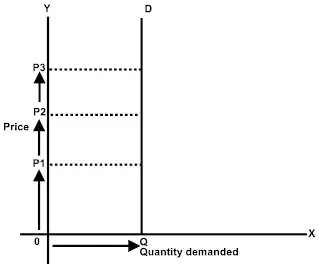
2. Relatively Inelastic Demand
If the percent change in demand is less than the percent change of the product’s price, the result is relatively inelastic demand. Necessary goods and services that people would be willing to pay more for have relatively elastic demand — in most cases.
This often includes goods or resources with no close substitutes, like gasoline which is a requirement for you to drive your vehicle. Losing access to it would have massive implications on your daily life.
For the most part, people are willing to pay price increases and keep their cars fueled up. That said, however, gas isn't as critical as a life-saving drug, so some people would be willing to make the switch to taking the bus or riding their bike (if possible). This means demand for it is relatively inelastic.
3. Unit Elastic Demand
If the change in demand for a product or service yields a proportional change in price — meaning a price raise of X% leads to an X% decrease in demand — it unit elastic demand.
This type of price elasticity of demand is purely hypothetical. There are no actual examples of unit elastic demand in practice. Demand is never completely linear. Though there is a direct relationship between price and demand, that relationship is never exactly one-to-one.
Let’s say I run a shoe company and raise prices by 10% due to increased manufacturing costs. If I’ve established a loyal customer base, there will still be consumers who prefer my shoes to the alternatives and are willing to pay an extra 10%. As a result, a 10% raise in price won’t mean exactly 10% of existing customers jump ship. The real number might be closer to 6% or 7%.
Now, imagine I abruptly raise the price by 40%. This will likely anger a larger number of customers relative to the percentage change in prices. In other words, a 40% price increase might lead to 60% customer churn.
4. Relatively Elastic Demand
If demand change is greater than the change in your product’s price, you have relatively elastic demand. Here, a relatively small price change leads to a large change in demand. Relatively elastic demand is typically associated with items that have several substitutes.
For instance, let‘s say I run an electronics company that sells 40-inch smart TVs for $250. All of my competitors sell similar products for the same price — and those competitors’ TVs have virtually indistinguishable resolutions and features from mine.
If I decide to raise my price from $250 to $275, consumers would likely be less inclined to pay an additional $25 for a product that's so fundamentally similar to its slightly less expensive competition. This means demand for my TVs would drop significantly, making demand relatively elastic.
5. Perfectly Elastic Demand
If demand falls to zero at the slightest price increase or demand becomes great with a slight price decrease, the result is perfectly elastic demand. This type of demand demonstrates that the demand for a product is 100% directly tied to its price.
Like unit elastic demand, there are no actual examples of perfectly elastic demand in practice. Demand for a product or service is never linear enough to make any change in price prompt an absolute drop in demand.
There will always be some people who have preferences that are often unshaken by slight price changes. If the price of a bottle of Sprite increased by $1, there would still be consumers willing to pay more for it over alternatives like Sierra Mist or 7Up.
While some offerings have particularly price-sensitive customer bases, there aren't any that consumers will completely abandon as soon as that good costs even one cent more than it did before.
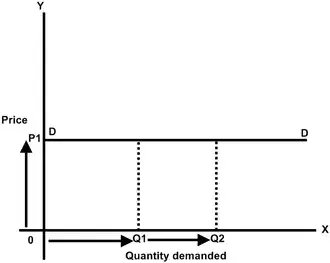
Price Elasticity of Supply
The price elasticity of supply (PES) measures how responsive the supply of a product or service is when there is a price change.
If supply is inelastic, it might mean a company is too short-staffed to keep up with demand, needs a longer lead time to produce more of its product, or doesn't have the resources to expand its facilities.
If supply is elastic, a company might have a surplus of available staff to increase supply. Knowing PES allows businesses to determine whether a price change will negatively or positively affect the demand for its product or service.
Price Elasticity of Supply Formula
Price Elasticity of Supply = % change of supply / % change in price
If supply is inelastic, an increase in price leads to a change in supply that's less than the increase in price, meaning the PES is less than one. If supply is elastic, the price change yields a larger increase in supply, making the PES greater than one.
Let’s use the toothbrush example above to illustrate PES. We already know that the price changed from $25 to $30, which represents an increase of 20%. If we’re given data that shows available supply dropping from the initial 5,000 to 4,500, this gives a supply decrease of 10%.
Therefore, PES = 10% / 20%, or 0.5, which means that the price elasticity of supply is inelastic.
Cross Price Elasticity
The cross-price elasticity of demand measures how responsive the demand for a product or service is when the price for another product or service changes. For example, if Hulu with Live TV raises its prices to $45 per month, will customers leave the service for YouTube TV — a similar streaming service charging only $40 per month?
As the price of Hulu Live rises, the demand for its competitor’s service rises. Within cross-price elasticity, YouTube would be considered a “substitute good.”
If, however, the cost of televisions increased and the number of customers using subscription services like Hulu or YouTube decreased because of the price increase of televisions, this would be called “complementary goods.”
Cross-price elasticity allows businesses to price their products or services competitively, plan for risks, and map their market. If your product or service has no real competitor, you don't need to consider cross-price elasticity because there is no substitute for your offering. However, if a complementary product or service sees a market fluctuation, you might need to prepare for cross-price elasticity.
Cross-price Elasticity Formula
Cross Price Elasticity of Demand = % change in quantity demanded for Product A / % change Product B’s price
In the case of cross-price elasticity, we don’t use absolute values. If the value of cross-price elasticity is positive, it means that changes in product B’s price increase demand for product A. If the value is negative, it means that price changes decrease the demand.
The value can also be zero, which means there is no correlation between the demand for product A and the price of product B.
Consider the streaming example above. If Hulu (product B) increases its price from $40 to $45 per month, this represents a 12.5% change. If Netflix (product A) sees a 20% jump in demand, the cross-price elasticity is 1.6. This means changes in the price of Hulu cause an increased demand for Netflix.
Practical Economics: The Case Understanding Price Elasticity
I’m still not an economics expert, but after my research, I’m confident I have a solid grasp on the price elasticity of demand and supply, with a bonus thrown in for getting the hand of cross-price elasticity.
The same applies to you. There’s no need to know everything about economics — you’d have to give up running your business if that was your goal. But, it is worth knowing how to calculate price elasticity and use this data to ensure your products or services are competitively priced.
Editor's note: This post was originally published in April 3, 2019 and has been updated for comprehensiveness.
Pricing Strategy
.png?width=112&height=112&name=Image%20Hackathon%20%E2%80%93%20Vertical%20(45).png)

.png)



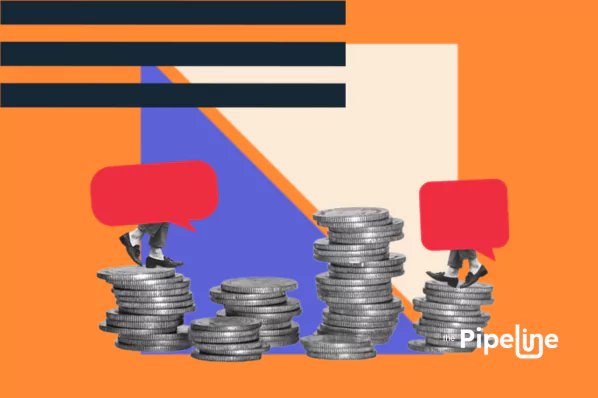

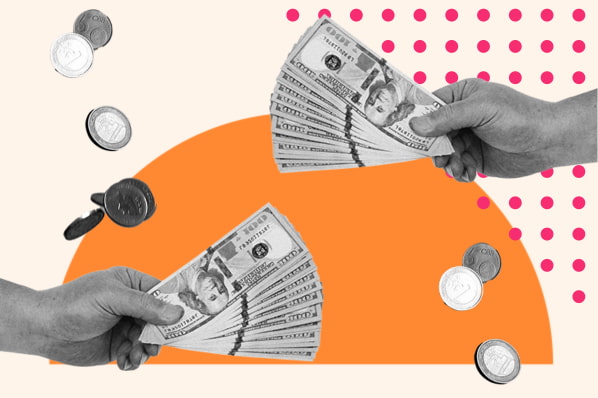
![Price Skimming: All You Need To Know [+ Pricing Calculator]](https://53.fs1.hubspotusercontent-na1.net/hubfs/53/price-skimming-strategy.jpg)

.jpg)
![B2B Pricing Models & Strategies [+ Pros and Cons of Each]](https://53.fs1.hubspotusercontent-na1.net/hubfs/53/b2b-pricing-models-and-strategies.jpg)